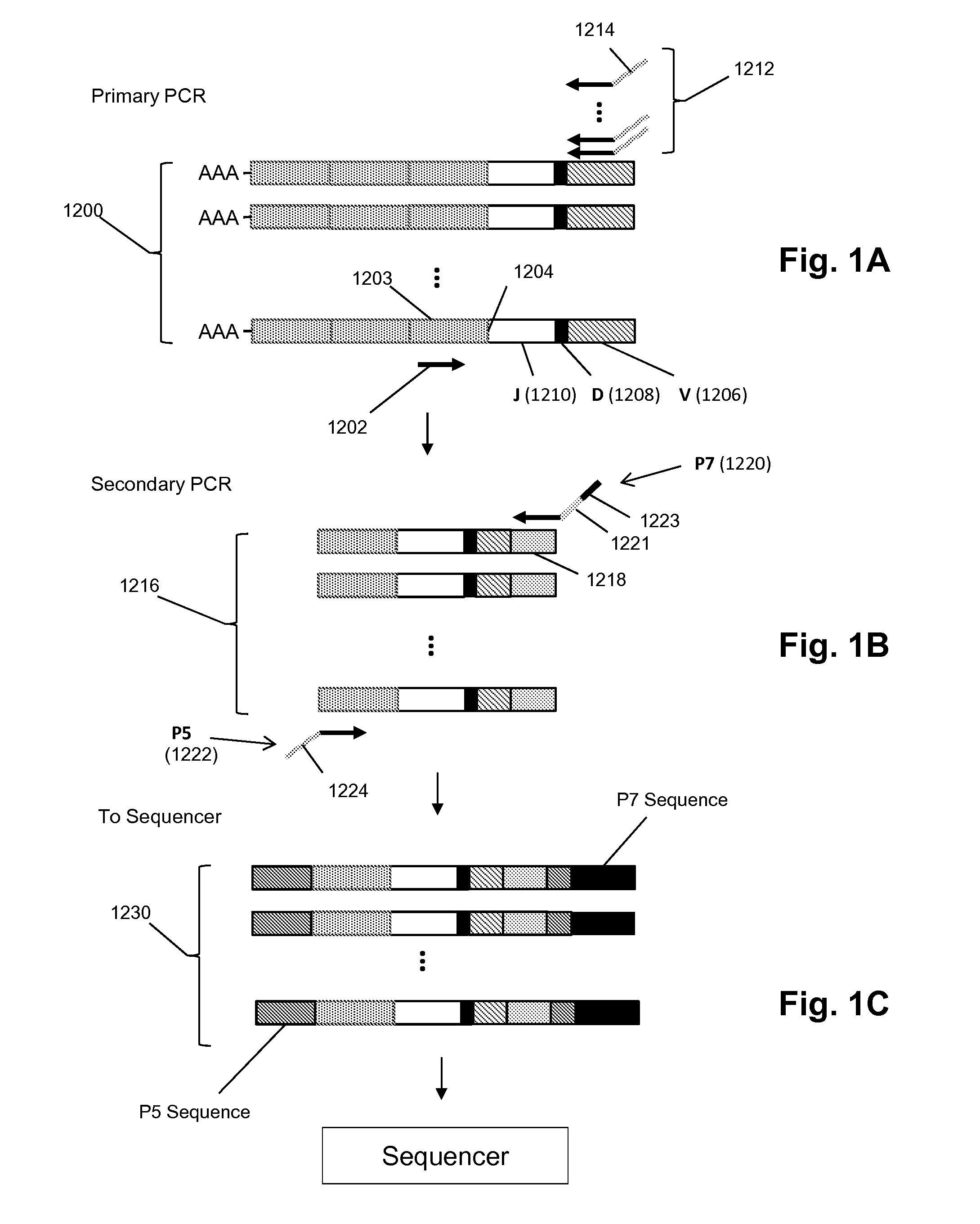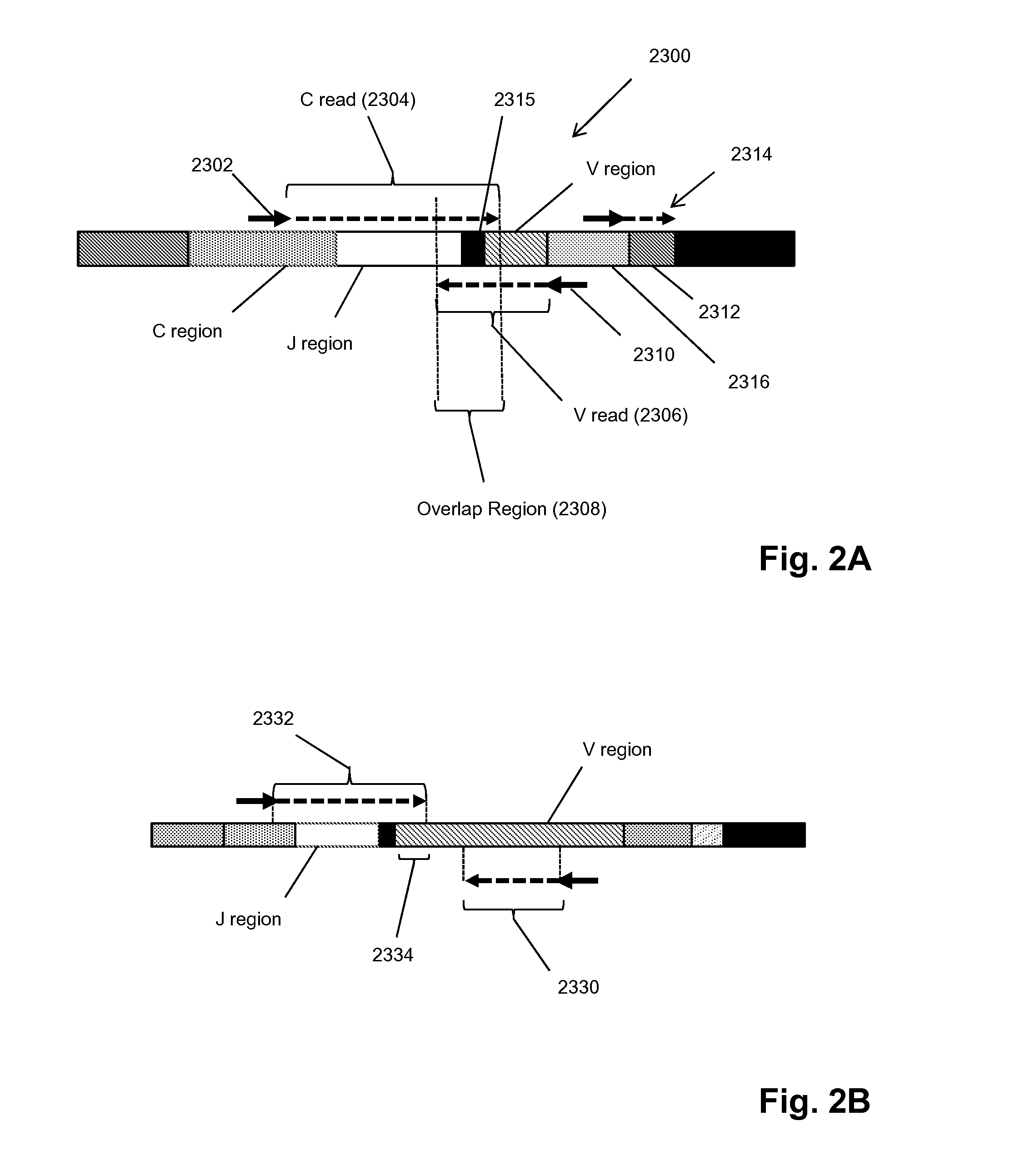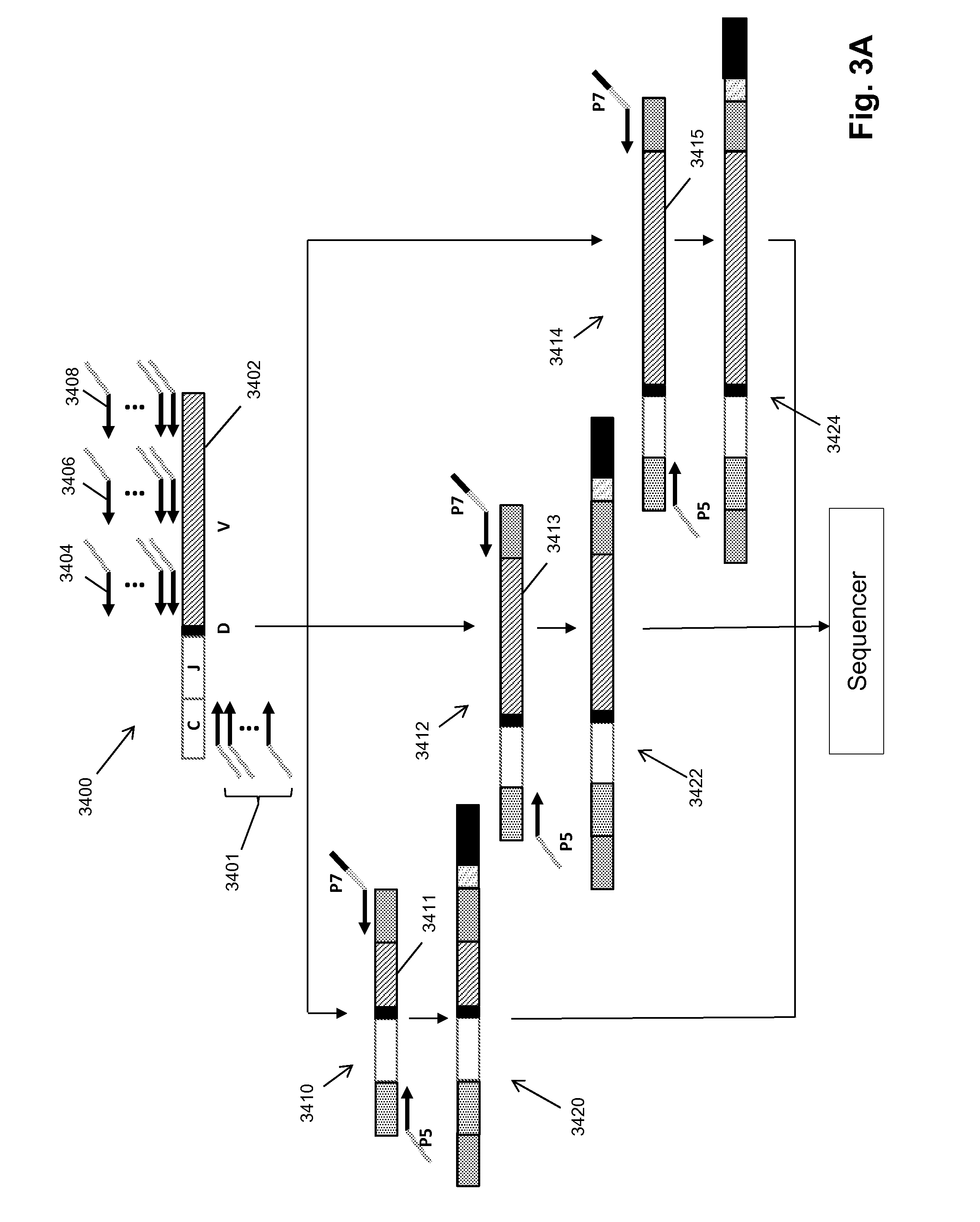Monitoring mantle cell lymphoma clonotypes in peripheral blood after immunotransplant
a technology of peripheral blood and immunotransplantation, which is applied in the field of monitoring mantle cell lymphoma clonotypes in peripheral blood after immunotransplantation, can solve the problems of poor long-term prognosis of mantle cell lymphoma (mcl)
- Summary
- Abstract
- Description
- Claims
- Application Information
AI Technical Summary
Benefits of technology
Problems solved by technology
Method used
Image
Examples
example
[0058]A phase 1 / 2 study of immunotransplant for newly diagnosed MCL patients was initiated to test the hypothesis that immunotransplant will amplify anti-tumor T cells. Anti-tumor T cells are assessed by co-culturing autologous tumor with peripheral blood T cells and measuring their production of: IFNg, TNF, IL2, CD137, perforin and granzyme by multiplex surface and intracellular flow cytometry. A secondary endpoint is measurement of molecular residual disease (MRD) using allele-specific oligonucleotide PCR (ASO PCR) and immune receptor repertoire analysis, which employs consensus primers for universal amplification and sequencing of nucleic acids encoding immunoglobulins. The study is powered to detect a 50% improvement in sustained molecular remission rate compared to recent trials of standard transplant, e.g. Pott et al, Blood, 115(16): 3215-3223 (2010); Geisler et al, Blood, 112(7): 2687-2693 (2008). Thirteen of twenty-five enrolled patients completed the immunotransplant protoc...
PUM
| Property | Measurement | Unit |
|---|---|---|
| Fraction | aaaaa | aaaaa |
| Fraction | aaaaa | aaaaa |
| Frequency | aaaaa | aaaaa |
Abstract
Description
Claims
Application Information
 Login to View More
Login to View More - R&D
- Intellectual Property
- Life Sciences
- Materials
- Tech Scout
- Unparalleled Data Quality
- Higher Quality Content
- 60% Fewer Hallucinations
Browse by: Latest US Patents, China's latest patents, Technical Efficacy Thesaurus, Application Domain, Technology Topic, Popular Technical Reports.
© 2025 PatSnap. All rights reserved.Legal|Privacy policy|Modern Slavery Act Transparency Statement|Sitemap|About US| Contact US: help@patsnap.com



